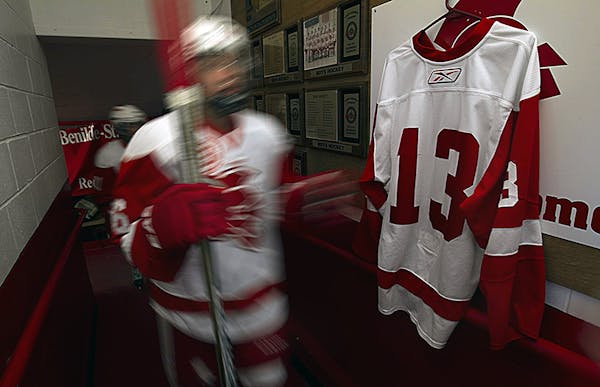Every day brings a tragedy.
It's part of the nature of life in a newsroom -- indeed, of life itself.
So, in some ways, it's difficult to discern why the story of Jack Jablonski, whose world changed in an instant one day on the ice, has captured the hearts of so many.
Pam Louwagie and Carlos Gonzalez first began working on the story about Jablonski that appears in today's Star Tribune just a few days after the hit last year that left the young hockey player paralyzed from the chest down. Initially, we thought we would follow Jablonski through rehab and write about his efforts to reclaim his life after his story faded from public view.
As months unfolded, however, it surprised us that this never really happened. Quite the contrary, Jack Jablonski has become a public figure. His personal tragedy has given rise to changes in how penalties are called, to numerous fundraisers, to 50,000-plus Twitter followers, to attention from scores of athletes around the country.
Given that, we wondered if we should abandon the story that has already been told so well. A few readers were actually offended that Jablonski got so much attention when others struggling with illnesses and accidents receive little. Louwagie thought about this challenge for a while and talked it over with other journalists. Then she proposed writing the story from a different perspective, capturing not just Jack's story, but the way this accident has reverberated through so many lives, from those who knew him intimately to total strangers.
"So many people were touched in different ways by that split-second on the ice," Louwagie said. "I was struck by how the boy who hit him bravely went to his hospital room to talk to him. I was struck by how Jack's introspective coach told me, in March as his team was heading into the state tournament, that hockey is just a game and it wouldn't really matter if they won in the tournament. They were dealing with a much more important tragedy."
This is difficult reporting, asking people to open their doors and their hearts to a reporter and photographer during such trying moments. It's also hard to talk to family and friends frankly about hope vs. reality, when everyone is hoping for a miracle. Louwagie and Gonzales visited Jablonski and his family in the hospital, in rehab and at home on his birthday. The journalists couldn't help but be affected by this story themselves as they reported it over the course of nearly a year.
"As a photographer, it can be extremely difficult to document a family going through a tragedy," Gonzalez said. But Jack is a remarkable young man with a great attitude, which actually made my job ... easier." Louwagie said that she, too, was struck repeatedly by Jablonski's ability to respond positively to situations that would have driven her to tears. "He finds humor in situations. He puts people at ease. He makes people feel good."
That doesn't mean there haven't been down moments along the way, and Louwagie and Gonzalez captured those, too.
The result is a poignant rendering of life after the hit, delivering heartbreak and hope, pain and perseverance, and above all, the resiliency of the human spirit. The story and photos also help answer the question of why this story has captured the hearts of so many.
Jack is every boy. Every young athlete who struggles to achieve on a field, on a court, on the ice, could picture himself or herself in his skates. Every parent saw his or her own child, every coach one of his or her own players. What happened to Jack could happen to any of us, or to one of our children, in an instant, and how would we respond?
We can only hope that we would approach life with the question a 17-year-old asks himself every day as he still comes to grips with his life-altering injury: "What if something amazing happens today?"
* * *
Nancy Barnes is editor of the Star Tribune.
Lab-grown beef is red meat for the conservative base


